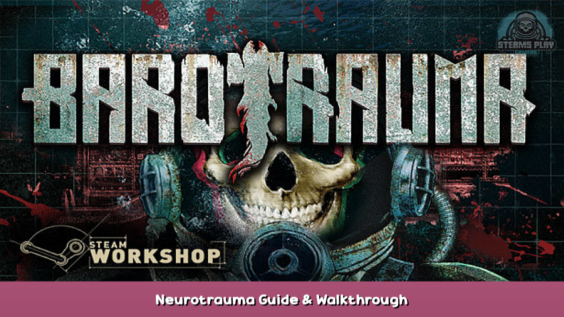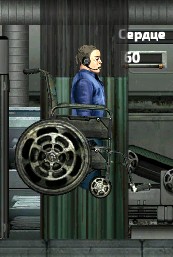
In my guide, you will find my research on neurotrauma, including more information about the symptoms, trauma and side effects as well as cool ideas.
Pills and Substances
Thiamine-Vitamin B1, which promotes organ restoration, has a side affect. The patient will only lose 4% of his blood when using 1-infinity. Thiamin is 45% efficient. If you give 2 Thiamins, your effectiveness will be up to 100%. (. Possibly improves neurotrauma healing.)
Azathioprine acts as an immunosuppressant. This means that you have a greater chance of successfully transplanting an organ to a patient. (1 Azathioprine has a 45% effectiveness. If you give 2 of it, the effectiveness will reach a maximum of -100%. Also causes blood loss of up to 4%)
Mannitol – Improves recovery after Neurotrauma. Recovery effectiveness depends on the severity and extent of organ damage. (1 syringe of Mannitol works 46 %!!!!!! effectively. It is more effective than previous drugs because it hits the organs.
Explosive Grenade Extract: Heals injuries similar to vanilla but is weaker. (required to make Eye Drops.)
Ringer's solution – Temporary blood replacement. Increases blood pressure by 30% Take 2 tablespoons to increase the risk of developing diabetes.
Adrenaline- Adrenaline
Propofol is paralysis without antidote. It is used to substitute for analgesia and to disconnect the player from the computer for 5-10 min.
Morphine – A patient who takes 5 servings of morphine per day will experience a overdose of 45% and analgesia equal to 200% (. After 10 servings, the patient will feel uncomfortable in the air. Hypoxemia and lack oxygen can lead to organ injury.
Broad-spectrum antibiotics: Damages the kidneys and organs by 10%. In other cases, it can be used to treat Sepsis or prolong life for parasite-infested patients.
Sulfuric Acid: Causes burns. And that's it. (could be due to burns. An infected wound might appear.
Ethanol is a medical alcohol. If the patient is given only one bottle, they will not be intoxicated or have any injuries. Two bottles of alcohol will cause the patient to become 40% intoxicated (. Maximum 160% for). Alcohol poisoning can be caused by drinking a lot of alcohol (. Soon, the underdog will have liver problems (.
Anabolic steroids are steroids. Anabolic steroids do not cause harm to the organs but can cause breakage.
Hypercin: One dose of Hypercin will cause a significant increase in neurotrauma. The patient will then experience psychosis up until 23%.
Morbuzin-Neurotoxin. If the patient cannot be cured, then at 100 percent efficiency
Coma will become
Cyanide is neurotoxic. If the patient does not get treatment, he may experience respiratory distress and eventually, (Hypoxemia).
Stradanite-Neurotoxin. If the patient isn’t cured, then there will be blood loss and eventually, intoxication.
Pressure stabilizer – Originally, it was harmful to the human body. But, since the update, it has been made harmless.
Liquid oxygen – One dose will cause 9% kidney damage and 9% organ damage. The damage to organs and kidneys will be less if you give the 2nd dose. Organ 14%, kidney 12%. (This is the result of 2 doses)
Sodium nitroprusside is a new drug that lowers blood sugar. Pressure will drop by 50% The effect of 1 batch is 45%. If you decide to give 2 batches to the patient, he will still only be able to drop to his blood pressure limit of 55%.)
Injuries
Fracture to the femur. Broken femurs will cause the patient to walk slower. After a prolonged stay with a fractured femur, the patient will have an injury of the internal organs.
Fracture to the humerus- You will suffer the same pain as the femur.
Dislocations – Using a wrench to treat. (A greater degree of medical skill is required to treat a patient with a fracture-free diagnosis.)
Fracture to the skull – Patients who have suffered a skull fracture will experience a 20% increase in neurotrauma. However, it will soon decrease. Next, the eyes will be damaged. This will only increase their damage. (1 Remik bullet is enough to cause the same symptoms within a matter of seconds. + A bonus like goinguge an eye)
Fracture in the neck – If the patient is in emergency, they will not be able to treat the spinal column, which can lead to paralysis.
When ruptured, the carotid, femoral and brachial blood vessels bleed at a rate up to 4% per minute.
How to perform the operation
How do I perform the operation? Let's get started by taking the bullet.
6 actions are sufficient.
(Any actions will be visible as symptoms.)
1. You can use any opiate.
2. Use a scalpel (regular, not for organs.)
3. Use clamp
4. Use an expander
5. Use semi-sterile tweezers. (Simply use the Information Scanner to determine if foreign bodies are present.
6. Sew up.
ALL!
Pneumothorax.
1. You can use any opiate.
2. Use the scalpel for the CHEST (Torquoise)
3. Use clamp
4. Use an expander
5. Drainage using the extended chest incision
6. Sew up.
hypoxemia
Use a needle. Or Deusicin.
3rd degree burn
1. You can use any opiate.
2. Use a scalpel
3. Use clamp
4. Use an expander
5. Elastic bandage!!! (Simply placing your arm on the ground won't help.)
6. Sew up
Fracture in the ribs and skull, neck, humerus and femur.
1. You can use any opiate.
2. Use a scalpel to (Find the fracture)
3. Use clamp
4. Use an expander
5. Use the surgical drill
6. Implants for osteosynthesis (. If the vertebrae are broken, implants of).
7. Sew up.
Rupture or compression of the artery of carotid, brachial, and femoral
1. You can use any opiate.
2. Use a scalpel to puncture the artery (
3. Use clamp
4. Use an expander
Optional: If it is foreign,).
5. Sew up.
Organ transplant.
1. Use Azathioprine
2 Use any type of opiate.
2. Apply the scalpel to your chest.
3. Use clamp
4. Use an expander
5. Use a SPECIAL scalpel to treat a specific organ. (More medicine means that the organ is less likely to be damaged.)
6. Replace the old organ with the new one.
7. Sew up.
More information about disease and other conditions
Surgical instruments
A patient who has an open incision will quickly begin to bleed (35% per second).
Patient loses blood in the form 1% within 12 seconds after collecting blood.
The patient may lose their ability to breathe and the blood pressure could drop to (.) All the negative symptoms that can occur with the end of the body's analgesia effect (. First, it will drop by 3% and then it will rise to 10% per minute. Further defeat, most neurotrauma)
(There is another method to kill people. Use a saw to remove the head and then sew it up)
Diseases
Blood transfusion shocks at 30-60% can cause serious injury to the body. Next comes Coma, neurotrauma. A blood transfusion is urgently required.
A patient with an infection rate of 50-70% will have serious health problems. Infected wounds can cause damage to the heart, kidneys, or bones. The wound should be cleaned and the bones and organs must be healed.
Radiation sickness (80-90% can cause organ damage (. The radiation sickness can also affect the bones) and (. If the damage is severe, neurotrauma can occur)
50% kidney damage is considered a healthy kidney.
Jaundice-She signifies that the patient's LIVER condition is critical.
Sepsis is a blood infection due to an infected injury.
Alkalosis refers a disturbance in the body's acid/base balance. This means that a patient may not have enough shelter for a prolonged period of time. This equilibrium will be disturbed if there is too much pressure. (Blood loss due to large blood flow will occur in the form of 4%). (Causes Hypoxemia and Fibrillation.)
Hypoxemia will occur, which can lead to brain damage and then neurotrauma.
Hypoxemia is rebellion against low shelter. An increased oxygen content is what causes digestion. (Deusicin is applied to the skin.)
Pneumothorax is a condition in which there is an accumulation of gases or air in the pleural area. Drainage for healing.
The roof should be lower than the floor. The lower the pressure, it will fall less!
One more thing. When streptokinase has been harvested, there is no damage.
With a spoon you can easily remove the eyes from a monster or husk in just one hit
EXPERIENCE GIN IN NEUROTRAUM !!!!! !
The End!
If you found this article useful, please rate it and like it!
Hope you enjoy the post for Barotrauma Neurotrauma Guide & Walkthrough, If you think we should update the post or something is wrong please let us know via comment and we will fix it how fast as possible! Thank you and have a great day!
- Check All Barotrauma Posts List


Leave a Reply